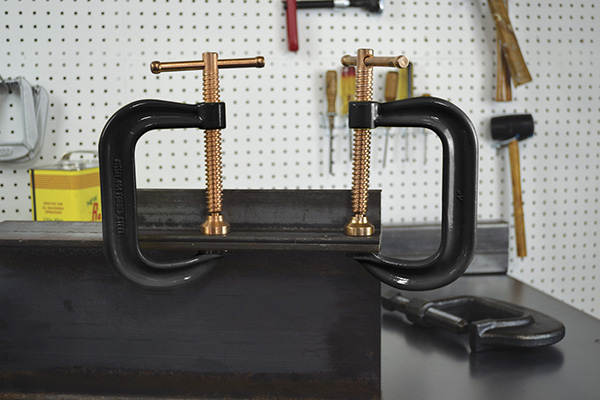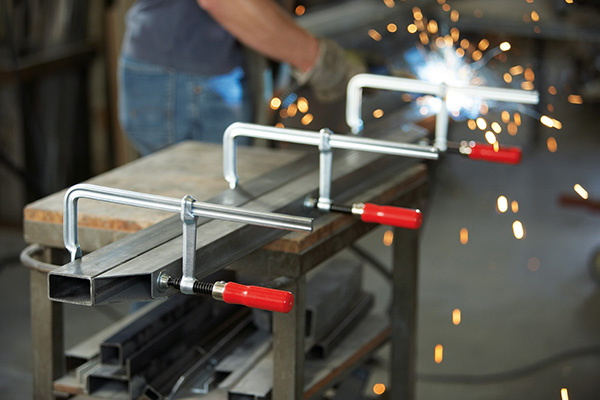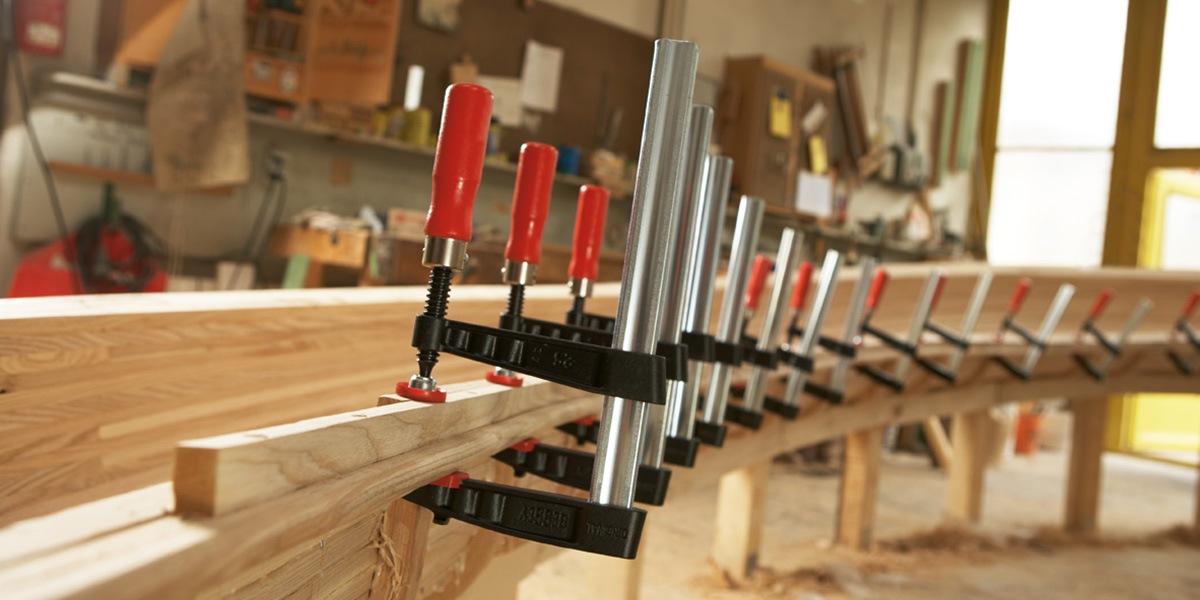Clamps – How To Find Your Fix
Clamps are tools used to hold two pieces of material together, be it for woodworking, carpentry, furniture making, construction, metal working, cutting, joinery, welding, carving and many other applications. Think of clamps as an extra pair of hands when in your workshop. Every professional and DIYer should have a range of high-quality clamps to streamline their projects when working alone. Clamps help secure materials in place and prevent your project pieces from moving around when being worked on. It is very important for woodworkers to use the correct quality clamps for their applications, or they could run the risk of over-clamping their projects.
Bessey clamps have been manufactured using the highest quality steel, meaning they do not buckle and bend, and due to their clamping force users can rest assured that there will be no slipping or movement issues on their workpiece. Using lower-quality clamps that continuously slip and loose holding power could mean that you over-tighten your workpiece causing indents in your wooden substrate. Alternatively using a clamp made from inferior steel could see your clamp bending thereby leaving you with a finished piece that is not perfectly square.
How Do Clamps Make Your Jobs Easier?
Everyone knows, time is money and using the incorrect tool for your application will not only cause user frustrations but will lower efficiency and productivity levels. Investing in the right high-quality tools will allow you to get more work done, faster and to a better-finished quality. Bessey prides itself on providing ‘Simply Better’ clamping solutions that do not buckle or bend and have been designed for quick, yet powerful clamping actions. Say goodbye to stress and missed deadlines when you opt for a Bessey clamping solution.
Using the correct clamps can set you apart from your competitors and help you get your work done faster, saving you time and money, and giving you better end results and happier customers. It makes you as an individual, or company look more professional if you have the right tools for the speedy completion of a job. Buying inferior quality clamps may result in time wasting and lower quality work, which will be detrimental to the reputation of your business and will eventually result in having an unhappy customer.
Choosing The Correct Clamp For The Application
Choosing the correct clamp for your industry or project application can seem complicated. Different industries or projects have different clamping needs. Having the right tool for the job is vital to your productivity and with new clamping technologies being developed daily it’s important to know how to select the right clamping solution.
Most hardware stores sell a variety of clamps from various brands and quality levels. Most clamps are made from high-quality ductile cast iron, drop forged, high carbon steel or anodized aluminum. They are strong and reliable, and additional zinc and chrome plating guarantees greater durability. Whereas, spring clamps are made from cheaper plastic with metal springs.
Before Choosing a Clamp Consider These Points
- What material is being clamped?
The material used dictates the best clamp to use. Spring clamps, F clamps, quick clamps, and general clamps that have a nylon or plastic protective cap on them can be used for sensitive products like wood, glass, perspex, and plastic. The clamps with no protective cover on the jaw are usually used on harder materials like metal. - What is the thickness of the material you need to clamp?
This determines how wide the jaw of the clamp will need to be and the clamping mechanism you require. - Over what distance are you clamping?
This determines the number of clamps you will need for your project. A top tip to always follow is to ensure you have enough clamps for your project so the clamping pressure can be evenly distributed. - How sensitive or rigid is the material to be clamped?
This will also assist you in assessing whether your clamp jaw requires a pad to prevent damage to the material being clamped i.e. wood bite or denting problems can be avoided by using a clamp that allows for pads to be added to the jaw clamps. - Is it for ongoing, tough construction or mining projects or for light hobby and DIY projects?
If clamps need to be used daily in tough industrial applications regularly then heavy-duty clamps would be more suited to ensure tool longevity. Whereas DIY-orientated applications require lighter-duty clamps. - Are you involved in metalworking clamping applications?
This will require specialised clamps such as Screw, Lever, High-Performance Steel, Sash and Step-Over clamps.
Different Types of Clamping Technologies

Spring clamps are traditionally a popular clamping solution and look and have similar functionality to that of a clothesline peg. This clamp that uses the pressure of a metal spring to clamp down two ends making it suited for clamping wood, metal, plastic and paper. Spring clamps are small, easy to use, have a single point of pressure and are quite powerful. These clamp openings range from 20mm – 75mm and have a simple operation requiring a user to squeeze the handle which opens the jaw, and when a user has positioned the clamp in place they release the handle to apply the clamping force.

Another popular clamp is the C clamp, which comes in different grades and qualities from the inferior quality and cheaper versions to high-quality industrial strength clamps. C clamps come in various sizes and are often made of cast iron or sintered steel, with a threaded shaft and Tommy handle. They also come with a coated exterior and copper-coated spindle to avoid welding spatter sticking to them. C clamps are used in various trades and industries, and the quality also varies from light DIY to heavy industrial versions. C clamps are almost impossible to break and are used in steel fabrication industries, and also by woodworkers.
Pipe clamps are very flexible and useful when clamping larger pieces together such as workbenches, multiple boards or panels, wooden strips and so on. They are inexpensive and can be used for multiple projects to your desired size as long as your pipe diameter is not larger than the pipe clamp opening. All you need is a pipe that is threaded on one side. These clamps are usually half inch or three-quarter inch in diameter.
Ratchet clamps are a very convenient and fast clamping solution that only requires one hand to operate. These clamps have a quick release functionality saving users a lot of time. One-handed clamps are used for clamping and spreading and can be used in all types of woodworking, carpentry and assembly applications. They do not, however, have the clamping force required for heavy-duty applications as is ensured when using a clamp with a threaded shaft, but due to their spreading functionality are ideally suited for basic DIY projects.

F clamps or as they are more commonly referred to, screw clamps, are inexpensive clamps ideal for holding pieces in place while gluing or screwing when working on a wooden piece, or welding or bolting metal pieces. Screw clamps are a budget-friendly clamping solution users can opt for when they need multiple clamps on a budget. F clamps are available in various sizes and throat depths to accommodate various applications and the rubber or plastic clamp pads on the jaws protect the surface being clamped from being scratched or indented.
Bessey has been developing ‘Simply Better’ clamping solutions since 1889 and can guarantee the quality of their products as all elements of clamping tools are producted in-house to maintain maximum quality levels. Still not sure what clamps will be most suited to your applications? Our Bessey Product Specialist has you covered all you have to do is get in touch and he will arrange a demonstration to ensure you get the best clamps for your work.









